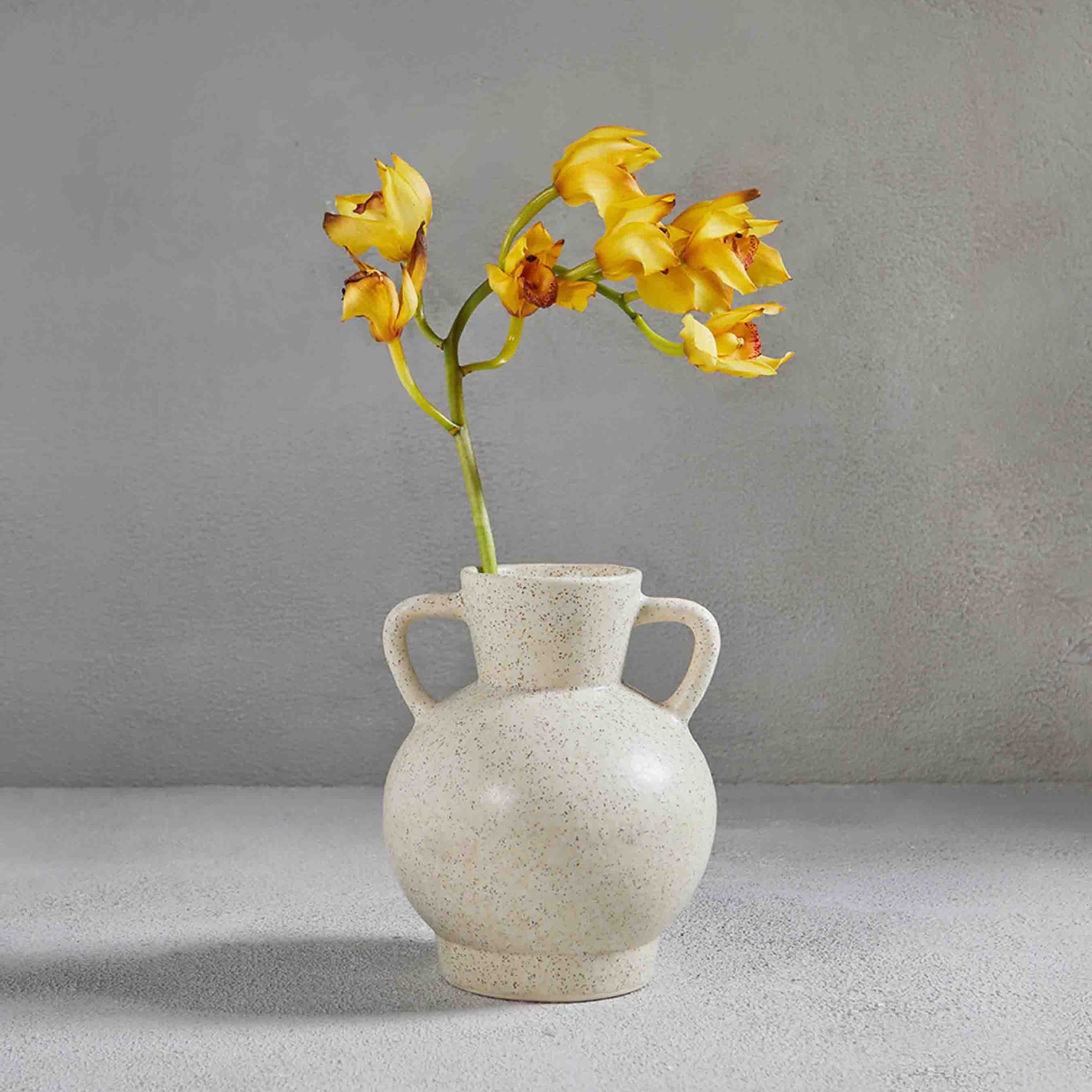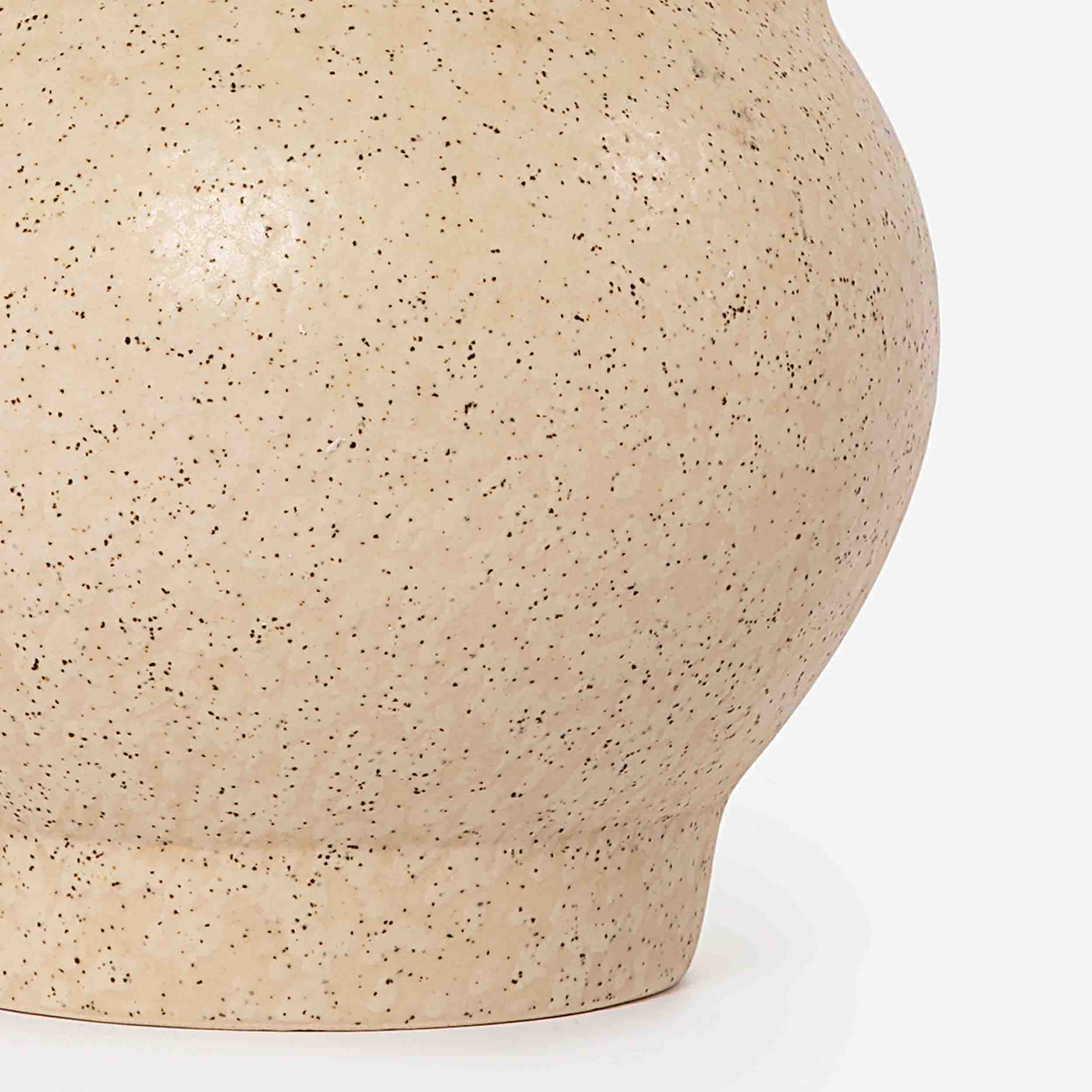MEDIO BALANCO BOTTLE
The greyish-green glaze makes this ceramic bottle and the accompanying kulhad more soothing
The greyish-green glaze makes this ceramic bottle and the accompanying kulhad more soothing
Craft Type: Studio Pottery
This decidedly good-looking bottle and its accompanying kulhad is the perfect addition to a guest room or lounge area, ensuring that water is always at an arm’s length. The gold detailing and its subtle hue adds a touch of elegance to the design. Pair it with the Espresso Cup in the same shade for matching drinkware at your home or work space.
This Bottle and Kulhad is handmade by artisans at Windglaze Studio Pottery, a studio based in Auroville near Pondicherry.
This product is handcrafted and slight variations in colours, textures and forms are to be expected.
Made in: Pondicherry
Material: Stoneware
Dimensions (cm): 8(L) x 8(B) x 24.9(H); Dia: 8
Dimensions (inches): 3.1(L) x 3.1(B) x 9.8(H); Dia: 3.1
Capacity: 650 ml
Weight: 950 grams
No. of pieces in a set: 2, One Bottle and Kulhad
Clay, a natural material, is used to make ceramic wares. It is kneaded and then thrown on a pottery wheel, where it is shaped by hand into this product. The clay product then goes through the process of bisque firing, glaze application, drying, and then glaze firing to make the final ceramic product.
Pottery in the Indian subcontinent has a long history — it has existed as a craft form for centuries. Evidence of earthenware has been found in the early settlements of Lahuradewa and later during the Indus Valley Civilization. Recent times have seen pottery taking on modern design sensibilities, aided by artists and potters that are breathing new life into the craft form. Studio pottery in India is said to have been started by Rabindranath Tagore in Shantiniketan, West Bengal. It further branched out into two styles, which developed in Delhi under Gurcharan Singh and in Pondicherry under Ray Meeker’s Golden Bridge Pottery.
- Wash by hand only, using a mild dishwashing soap. Dry using a soft towel or tissue. Avoid stacking pieces in the sink.
- While stacking for storage, consider using tissue in between ceramic pieces.
- This ceramic product is microwave-safe.
- Description
- Process & Craft
- Care
Craft Type: Studio Pottery
This decidedly good-looking bottle and its accompanying kulhad is the perfect addition to a guest room or lounge area, ensuring that water is always at an arm’s length. The gold detailing and its subtle hue adds a touch of elegance to the design. Pair it with the Espresso Cup in the same shade for matching drinkware at your home or work space.
This Bottle and Kulhad is handmade by artisans at Windglaze Studio Pottery, a studio based in Auroville near Pondicherry.
This product is handcrafted and slight variations in colours, textures and forms are to be expected.
Made in: Pondicherry
Material: Stoneware
Dimensions (cm): 8(L) x 8(B) x 24.9(H); Dia: 8
Dimensions (inches): 3.1(L) x 3.1(B) x 9.8(H); Dia: 3.1
Capacity: 650 ml
Weight: 950 grams
No. of pieces in a set: 2, One Bottle and Kulhad
Clay, a natural material, is used to make ceramic wares. It is kneaded and then thrown on a pottery wheel, where it is shaped by hand into this product. The clay product then goes through the process of bisque firing, glaze application, drying, and then glaze firing to make the final ceramic product.
Pottery in the Indian subcontinent has a long history — it has existed as a craft form for centuries. Evidence of earthenware has been found in the early settlements of Lahuradewa and later during the Indus Valley Civilization. Recent times have seen pottery taking on modern design sensibilities, aided by artists and potters that are breathing new life into the craft form. Studio pottery in India is said to have been started by Rabindranath Tagore in Shantiniketan, West Bengal. It further branched out into two styles, which developed in Delhi under Gurcharan Singh and in Pondicherry under Ray Meeker’s Golden Bridge Pottery.
- Wash by hand only, using a mild dishwashing soap. Dry using a soft towel or tissue. Avoid stacking pieces in the sink.
- While stacking for storage, consider using tissue in between ceramic pieces.
- This ceramic product is microwave-safe.
Country of Origin: India
Manufacturer Details: Windglaze Studio Pottery : No: 181/10, Old Auroville Main Road, Bommiarpalayam - 605104














